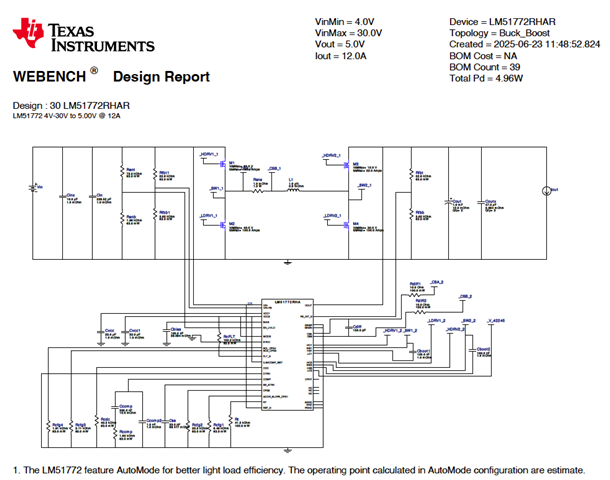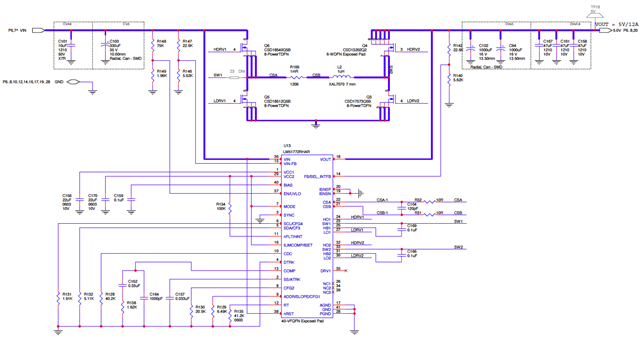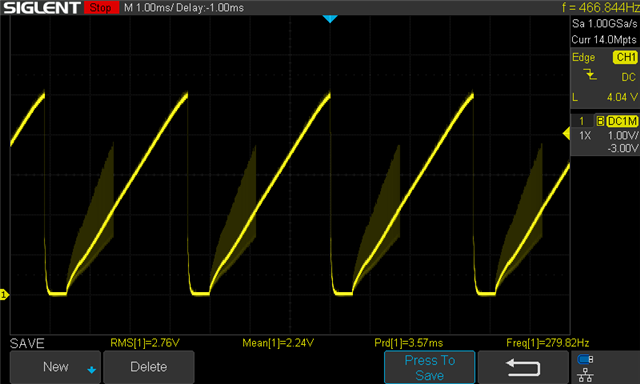Other Parts Discussed in Thread: LM51770, , CSD18540Q5B, CSD18512Q5B, CSD13202Q2, CSD17573Q5B
Tool/software:
We need to design a power supply for 5V. Our Vin is 4-30V. Output is 5V up to 12A. We selected the LM51772RHAR based on Webench DC/DC design tool.
We do NOT have I2C implemented.
The folllowing is taken from the Webench Design Report

The following is the the schematic that we manufactured.

The 5V output drives a secondary 0.95V power supply using the TI TPSM82816SIER, plus a few peripherals etc. Very small load.
We are using a 12V/7A DC supply to power up the board. However the 5V is not working.
The first issue we noticed was that the Webench Rfbb1 supplied value (1.96K) is too low too enable this device. The manually calculated value show that it should be around 38K. We removed the Rfbb1 (0402) to allow EN_UVLO pin (now 12V) to enable this device. Now the 5V supply does switch on but the output looks like this.

And the input and output caps are overheating. We think the LM51772RHAR maybe current limiting but we can't verify what the current limit should be given the none I2C adaption. From the schematic(s), you will notice that we are only implementing Rsns for sensing. I.e. no Risns.
Rsns = 1mR
Rdiff(s) = 10R, Cdiff = 120pF. From this we can calculate the ton,min = 150ns (Ref. section 7.3.10 Peak Current Sensor in the LM517772 datasheet)
We find that section 7.3.12 Current Monitor/Limiter is unclear given our system design (none I2C).
How can we verify if this supply is current limiting?
What else maybe causing this?

